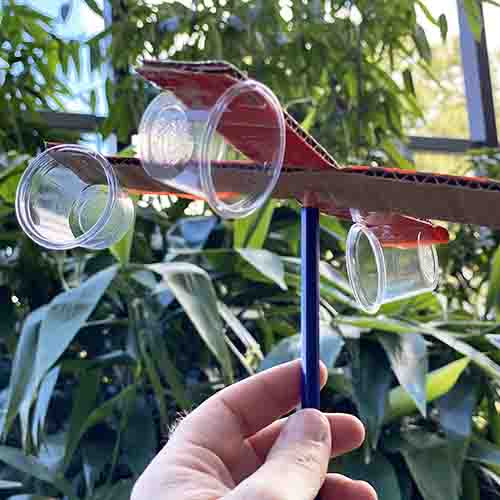Why an Anemometer is Important for Your Environmental Information Collection
Why an Anemometer is Important for Your Environmental Information Collection
Blog Article
Exploring the Features and Benefits of Anemometers for Weather Condition Enthusiasts and Professionals
From mug anemometers to sonic anemometers, each type brings its special set of benefits and applications, losing light on various elements of climatic problems. As we dig into the features and advantages of anemometers, a deeper understanding arises not only of prevailing climate phenomena but additionally of the wider implications for fields like wind power manufacturing and environmental study.
Value of Anemometers in Weather Condition Tracking
Anemometers play an essential function in climate surveillance by providing precise dimensions of wind rate, assisting in forecasting and understanding weather condition patterns. These instruments, varying from typical cup anemometers to contemporary ultrasonic anemometers, are necessary for meteorologists, scientists, and weather fanatics alike.

Types of Anemometers and Their Applications
The most common kinds of anemometers consist of mug anemometers, vane anemometers, hot-wire anemometers, and ultrasonic anemometers. Cup anemometers are composed of three or 4 cups placed on horizontal arms that rotate with the wind, measuring its rate. Vane anemometers, on the other hand, use an easily rotating vane to line up with the wind instructions, supplying both wind rate and instructions dimensions.
Cup anemometers are robust and appropriate for general weather condition surveillance, while vane anemometers are favored for directional measurements. Ultrasonic anemometers are non-intrusive and use high accuracy, often utilized in research study and specialized climate monitoring applications.
Advantages of Utilizing Anemometers in Forecasting
In meteorology, the use of anemometers uses vital benefits for improving the accuracy of climate projecting. Anemometers gauge wind rate and instructions, supplying vital data for anticipating weather patterns. By incorporating wind data right into projecting designs, meteorologists can better understand the activity of climate systems, expect modifications in weather, and concern a lot more accurate forecasts.
In addition, anemometers play an essential function in evaluating potential climate dangers. Keeping an eye on wind speeds helps forecasters forecast serious weather occasions such as typhoons, tornadoes, and winter months storms with greater precision. This early warning system makes it possible for authorities to provide timely signals and carry out necessary precaution, reducing the threats to life and building.
Furthermore, anemometers assist in maximizing sustainable power production. By assessing wind patterns, meteorologists can determine suitable places for wind farms and anticipate power outcome, adding to the efficient generation of wind power.

Anemometers in Wind Energy Manufacturing
Offered the crucial function anemometers play in giving accurate wind data for weather condition projecting and threat assessment, their importance encompasses the world of wind energy manufacturing. Anemometers are essential instruments in the field of wind energy, where the dimension of wind rate and direction is critical for identifying the feasibility and effectiveness of wind generator installments. By precisely gauging wind speeds at differing heights, anemometers aid optimize the placement and layout of wind turbines to optimize energy outcome.
In wind farms, anemometers are tactically put to gather real-time wind information that is utilized to examine the possible power manufacturing of a site. This information is instrumental in determining the economic practicality of wind energy projects and in projecting power generation to make certain grid security. Furthermore, anemometers aid in keeping an eye on wind conditions to enhance turbine performance, prevent damages from high winds, and make sure the security of workers operating in the vicinity of wind generators.
Enhancing Weather Condition Comprehending With Anemometers

Anemometers play a crucial function in improving our understanding of microclimates. These local weather condition conditions can vary substantially from wider regional forecasts, making it important to have accurate data for specific locations. anemometer. By purposefully positioning anemometers in different locations, scientists can collect in-depth info on exactly how wind behaves in various surfaces, metropolitan atmospheres, or bodies of water
Furthermore, anemometers contribute to boosting climate forecasting models by providing real-time information on wind habits. This info is particularly important for predicting extreme weather condition events, optimizing farming methods, and supporting industries like aeronautics and maritime navigating. Generally, anemometers are very useful instruments that enable us to dive much deeper into the intricacies of weather systems, ultimately resulting in even more better-informed decisions and accurate predictions.
Verdict
Finally, anemometers play an important role in weather tracking and forecasting by determining wind speed and instructions. They are important devices used by climate lovers and specialists to gather accurate information for predicting weather condition patterns and assessing prospective impacts. Anemometers likewise have applications in wind power production, additional highlighting their significance in both meteorology and eco-friendly energy markets. Overall, anemometers add to boosting our understanding of weather phenomena and boosting projecting capabilities. anemometer.
From cup anemometers to sonic anemometers, each type brings its one-of-a-kind set of applications and benefits, shedding light on different elements click this of climatic problems. These tools, varying from traditional cup anemometers to contemporary ultrasonic anemometers, are necessary for meteorologists, scientists, and climate fanatics alike. The most usual types of anemometers include cup anemometers, vane anemometers, hot-wire anemometers, and ultrasonic anemometers. Cup anemometers are robust and suitable for basic climate surveillance, while vane anemometers are preferred for directional dimensions. Anemometers are Click This Link essential instruments in the field of wind energy, where the measurement of wind speed and instructions is essential for establishing the feasibility and efficiency of wind turbine installations.
Report this page